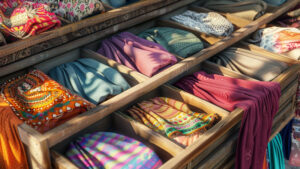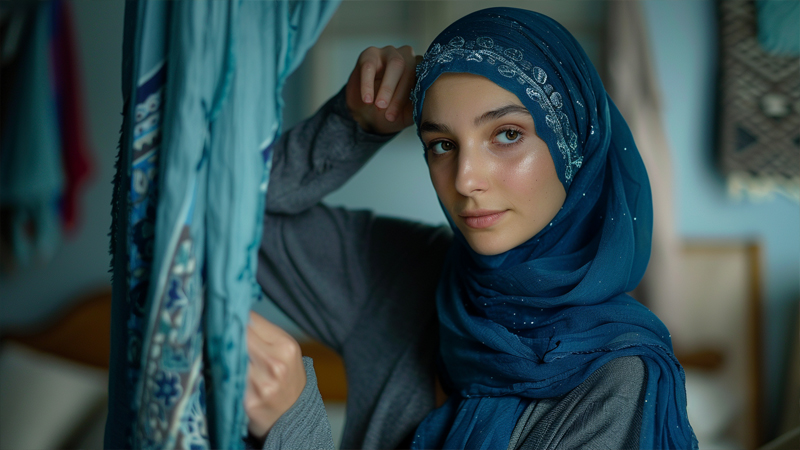
I remember the first time I saw a headcover that combined fashion and comfort—it completely changed my perspective.
Headcovers include everything from full coverage scarves to stylish layered designs, catering to diverse needs and cultural traditions.
Let’s see how they compare.
What are the features of full coverage headscarves?
They cover the entire head, sometimes extending below the neckline.
Full coverage headscarves provide maximum protection, blending modesty and comfort for wearers.

When I first tried a full coverage headscarf, I was surprised by how secure and cozy it felt. This style often wraps completely around the hair, ears, and sometimes part of the neck, leaving minimal room for stray strands to escape. Because of that, these scarves can be a lifesaver on a windy day or if you need added warmth during colder months.
In many cultures, a full coverage design reflects religious or social values. It’s not just about covering the hair—it can represent respect, tradition, or personal choice. Fabrics vary, from lightweight cotton for hot climates to thicker blends for cooler settings. You might spot subtle embroidery, gentle patterns, or even bright prints, depending on personal taste or local customs. I’ve noticed that some designs include an under-cap or adjustable ties1 to keep the scarf from slipping.
Full Coverage in Depth
These headscarves can come pre-tied, making them easy to slip on without fussing over knots. Others require a bit of skill. You fold, wrap, and sometimes pin the material into place. If you’re new to it, watching tutorial videos or getting hands-on help from a friend can make all the difference.
Full coverage scarves are also popular among people undergoing hair loss treatments, offering a sense of security and confidence. They can shield sensitive scalps from sunlight or harsh winds, providing a gentle but protective barrier. I recall meeting someone who wore a solid black scarf daily, finding comfort in its simplicity. Over time, she branched out into patterned scarves, discovering that the coverage remained the same while her fashion sense blossomed.
One of the biggest perks is the ability to accessorize. You can layer on a decorative pin2, add a slender headband over the top, or even incorporate your scarf into a layered wrap. The key is balancing function with personal flair. If you’re wearing a thicker fabric in winter, consider tucking in a stylish brooch. In summer, a lightweight cotton scarf with delicate floral prints might help you stay cool and breezy. Ultimately, full coverage headscarves3 adapt well across seasons, cultures, and personal preferences, giving you a secure wrap that can still reflect who you are.
How do partial coverage styles differ from full coverage?
Partial coverage leaves parts of the hair or neck exposed.
They blend modest coverage with a lighter feel, ideal for casual or warm climates.
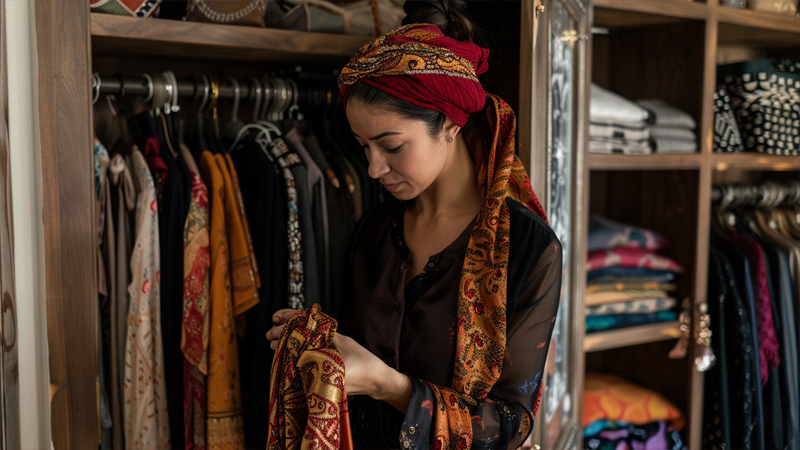
I’ve experimented with partial coverage scarves4 on days when I want my bangs to show or need a little more air circulation around my neck. These wraps might tie just around the crown, leaving the lower hair free, or loosely drape over the top of the head without fully enclosing it. Compared to a full coverage scarf, partial wraps offer more flexibility in styling and can feel less restrictive.
Understanding Partial Coverage
Some partial styles simply secure around the hairline, letting the rest flow behind the ears. This can be a fun way to highlight curls or experiment with different hair textures peeking out. If you like wearing your hair in a messy bun or ponytail, partial coverage can accentuate that style instead of hiding it. There are also variations that cover the top of the head but leave the sides or nape exposed, often held in place by an elastic band or a soft tie.
These scarves are popular in warmer climates or with those who don’t require full modesty for cultural or personal reasons. They can still offer sun protection, but they won’t trap as much heat around your head and neck. I find partial wraps great for quick errands or whenever I want to add a splash of color without committing to a full wrap.
Fabric choice matters here, too. Lightweight cotton or linen feels airy, while satin or silk can bring a luxurious glow to a partial style. If you’re heading to a casual get-together, a cheerful printed scarf might be the perfect finishing touch. For a more professional setting, a solid-toned partial wrap can look sleek without overpowering your outfit. And because these styles are simpler to tie, they’re often a fantastic starting point for those new to headscarves. Whether you’re testing the waters with partial coverage or transitioning between looks throughout the week, these designs strike a balance between comfort and creativity.
What are the benefits of layered headcovers for added style?
Layering scarves creates texture, visual depth, and unique color combinations.
By combining multiple wraps or accessories, you achieve a distinctive look without sacrificing functionality.
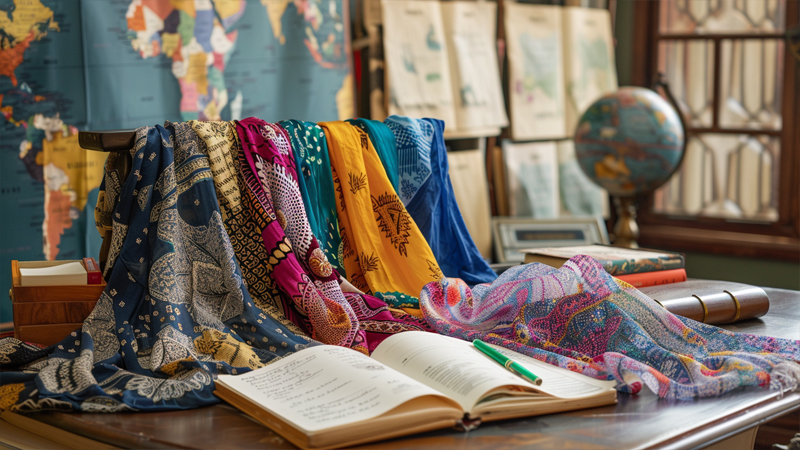
Sometimes, I’ll catch a glimpse of someone wearing two scarves tied together in a gorgeous knot, and I feel instantly inspired. Layering allows you to play with contrasting fabrics5—like pairing a lightweight floral wrap over a solid under-cap, or mixing bold geometric prints for a bohemian vibe. It’s also handy if you want both coverage and flair. You might wear a solid base scarf for full coverage and then add a second, narrower wrap around your forehead for decoration.
Exploring Layered Possibilities
The concept is simple: pick two scarves (or a scarf and a headband) that either match or complement each other. One acts as the base layer, ensuring you have the coverage or comfort you need. The second layer focuses on style. You can tie it into a bow, wrap it around the bun area, or spiral it across the crown for a turban-like effect. Because each layer has its own color or texture, the final look has more depth than a single scarf alone.
| Layering Technique | Key Features |
|---|---|
| Double Wrap (One Over Another) | Extra coverage, interesting pattern mix |
| Headband + Scarf Combo | Locks scarf in place, adds color |
| Contrasting Prints | Bold style, eye-catching aesthetic |
| Mixed Fabrics (e.g., Silk + Cotton) | Breathability + sheen, balanced look |
This layering approach also comes in handy when temperatures fluctuate. On chilly mornings, you can wear a thicker base layer and top it with a thinner scarf for warmth plus style. If the day warms up, remove the top scarf and keep the base. Personally, I love layering for special events—like a formal gathering or a festive celebration—because it lets me tie in different elements of my outfit. I might pick a base scarf that matches my dress, then add a shimmering overlay that echoes my accessories. It’s all about synergy.
Experimentation is key. Don’t be afraid to play with patterns: stripes on florals, polka dots on solids, or matching color palettes with contrasting prints. If you feel it’s too busy, you can always scale back. The beauty of layering is that you can create multiple looks from the same scarves just by shifting the second layer’s position or changing the knot style. Over time, you’ll discover combos that reflect your mood—whether that’s laid-back, boho, or something elegantly polished.
How do cultural variations influence headcover designs?
Different regions inspire unique fabrics, patterns, and tying methods.
Cultural heritage shapes headcover choices, from bold African prints to soft Middle Eastern drapes.
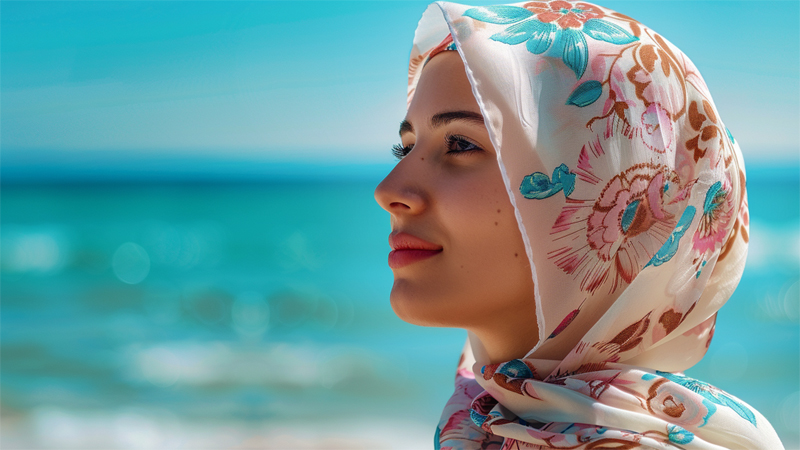
I’ve been fortunate enough to travel to a few different countries, and I’m always fascinated by local headcover traditions. In parts of Africa, you’ll see vibrant wax print fabrics6 folded into high, majestic wraps known as geles. Meanwhile, in the Middle East, thinner fabrics might be draped elegantly around the head and shoulders. South Asia has its own array of dupattas or chunnis, often featuring detailed embroidery7. Each region’s climate, history, and sense of style play into how these headcovers evolve.
Cultural Influences and Adaptations
One observation is that many headcover styles reflect practicality—like using breathable cotton in hot climates or thicker materials in cooler ones. Yet it’s also a form of self-expression. Traditional patterns and motifs can tell stories, represent social status, or mark special occasions. My friend in the Caribbean wears a headwrap that echoes her heritage through bright island-inspired prints, reminding her of home even when she’s abroad.
Over time, global influences mingle. It’s not unusual to see someone in a Western city pairing a boho-chic turban8 with jeans and a T-shirt, mixing elements from multiple cultures. Social media has made it simpler to learn about new tying techniques or discover creative ways to incorporate prints from around the world. I’ve personally tried African-inspired headwraps and found them empowering—there’s something about that structured, high knot that boosts my confidence.
At the same time, respecting cultural context is important. If you borrow a style rooted in a sacred or ceremonial tradition, it’s considerate to understand its significance. The last thing you want is to inadvertently wear a wrap that’s reserved for certain rituals or events. However, many communities happily share less formal wraps, appreciating that interest from outsiders can spark meaningful conversations. Ultimately, cultural variations in headcovers serve as a reminder: there’s a vast tapestry of design, technique, and symbolism out there, waiting to be explored and celebrated.
Conclusion
Headcovers open a world of possibilities—ranging from full coverage to layered styles—blending tradition, comfort, and personal flair.
-
Discover the convenience of adjustable ties in headscarves, ensuring a secure fit and preventing slippage for all-day comfort. ↩
-
Learn the art of accessorizing headscarves with decorative pins, adding a personal touch and elevating your style effortlessly. ↩
-
Explore how full coverage headscarves offer maximum protection, blending modesty and comfort, ideal for various climates and personal styles. ↩
-
Explore the latest trends and styles in partial coverage scarves to find the perfect match for your casual or warm weather needs. ↩
-
Learn how to expertly combine different fabrics for a dynamic and eye-catching outfit, elevating your style game. ↩
-
Exploring the origins and significance of vibrant wax print fabrics can deepen your appreciation for African cultural heritage and its influence on fashion worldwide. ↩
-
Understanding the role of detailed embroidery in South Asian headcovers can offer insights into the craftsmanship and cultural stories behind these beautiful garments. ↩
-
Discovering the cultural influences behind the boho-chic turban trend can help you appreciate the blend of global styles in contemporary fashion. ↩



